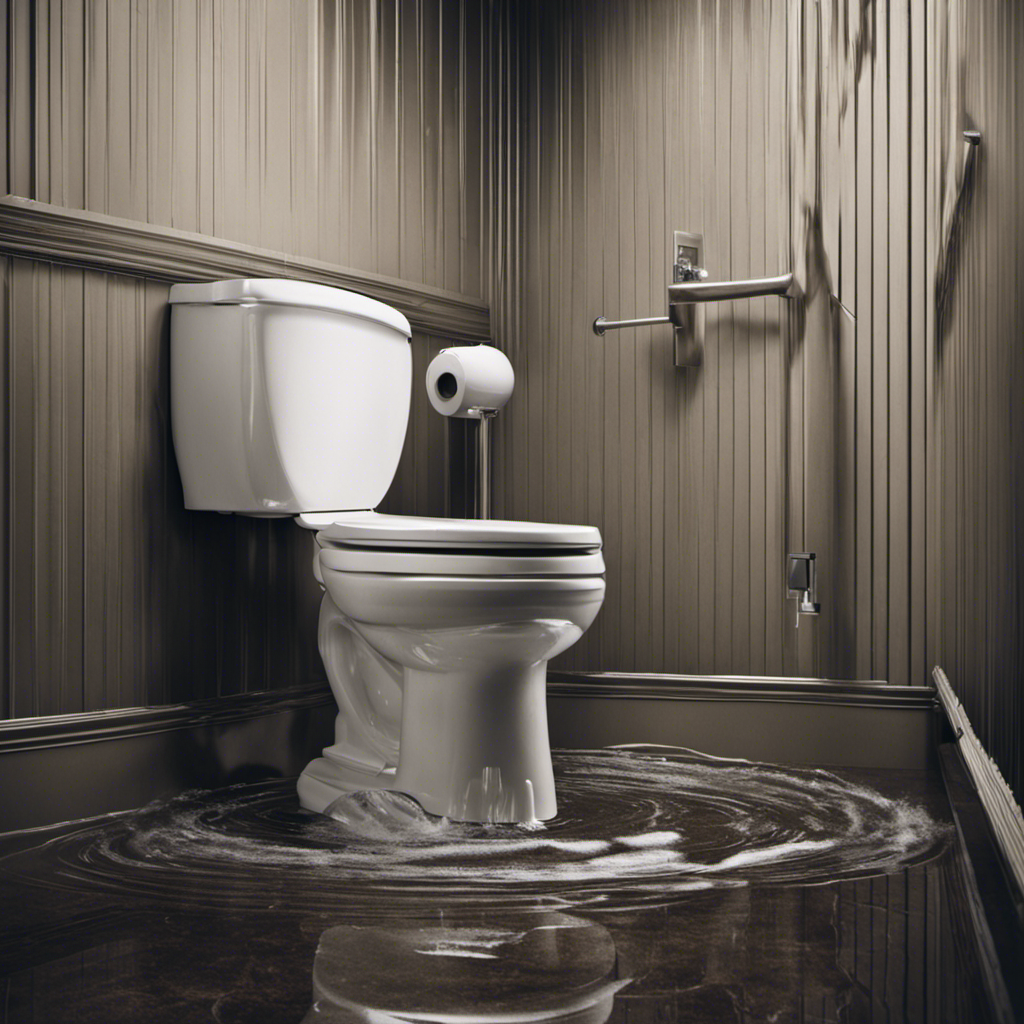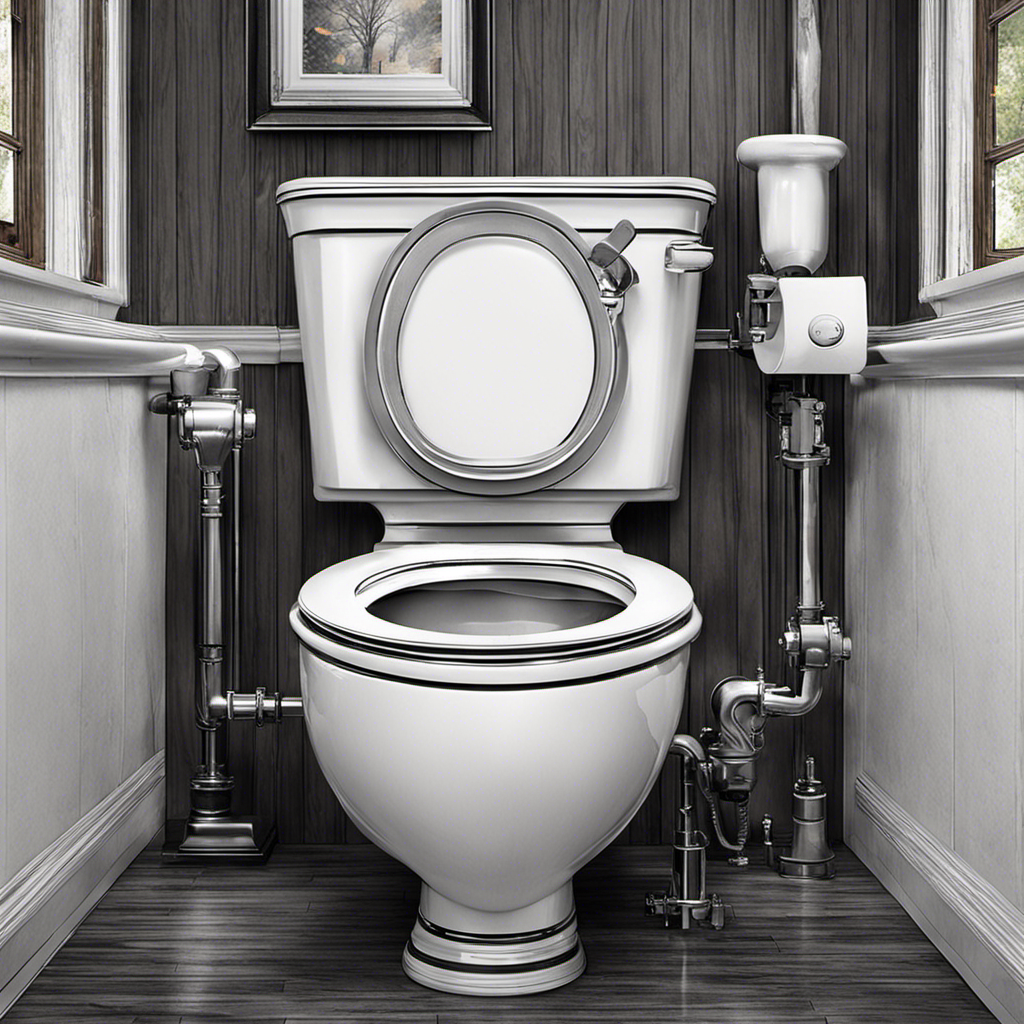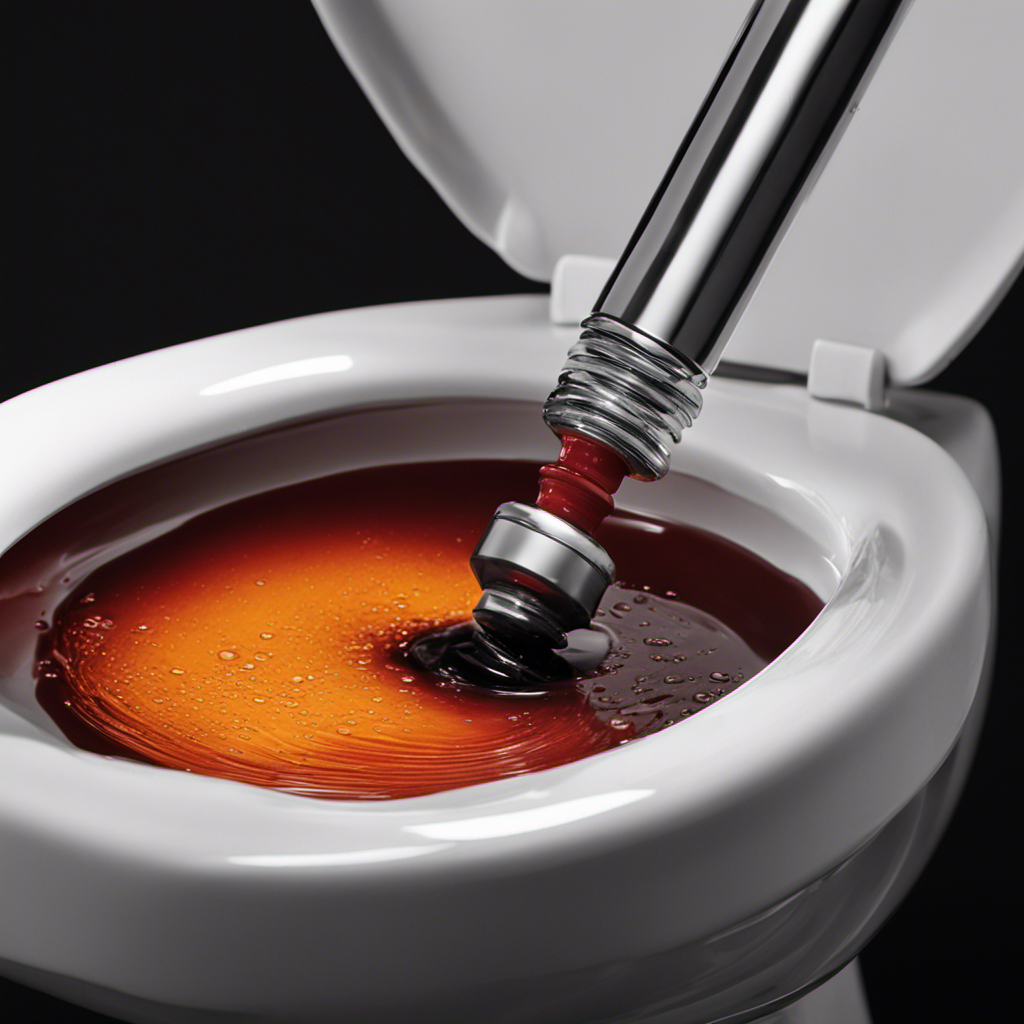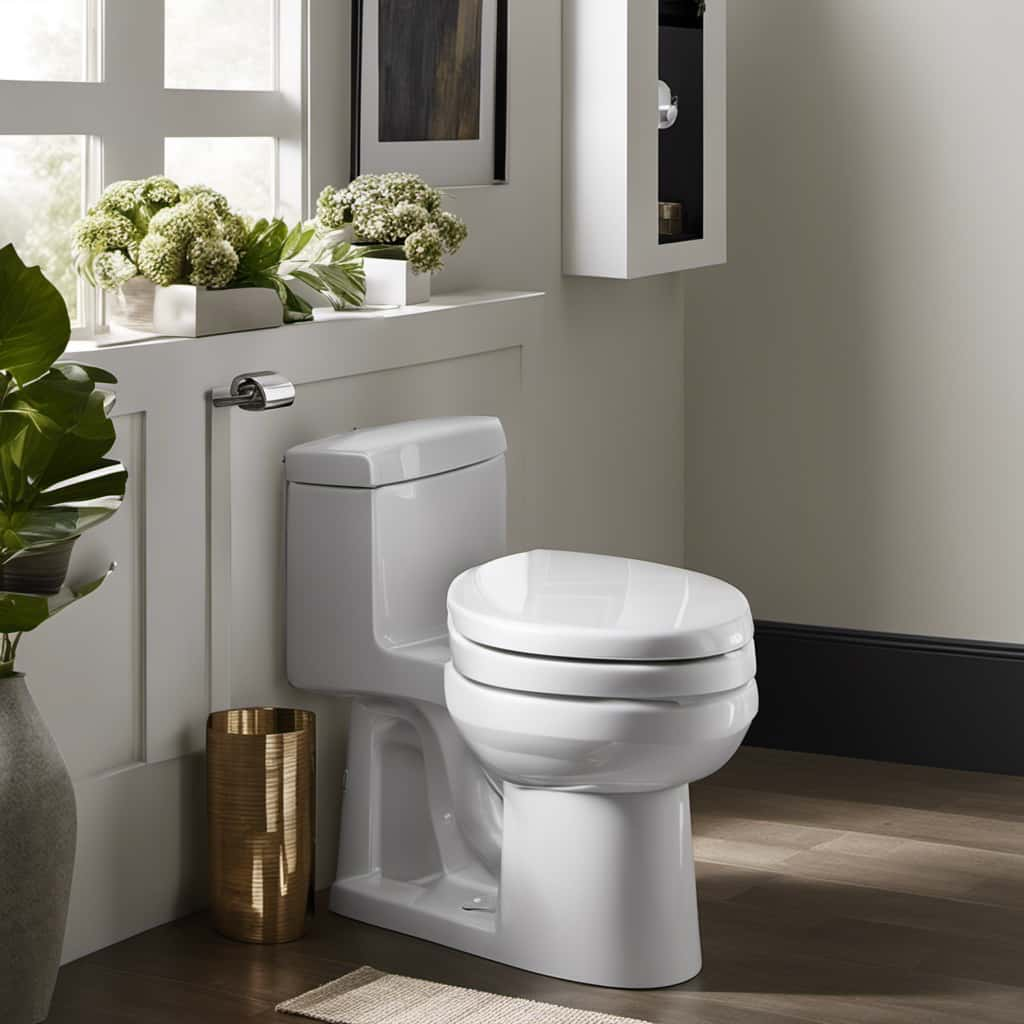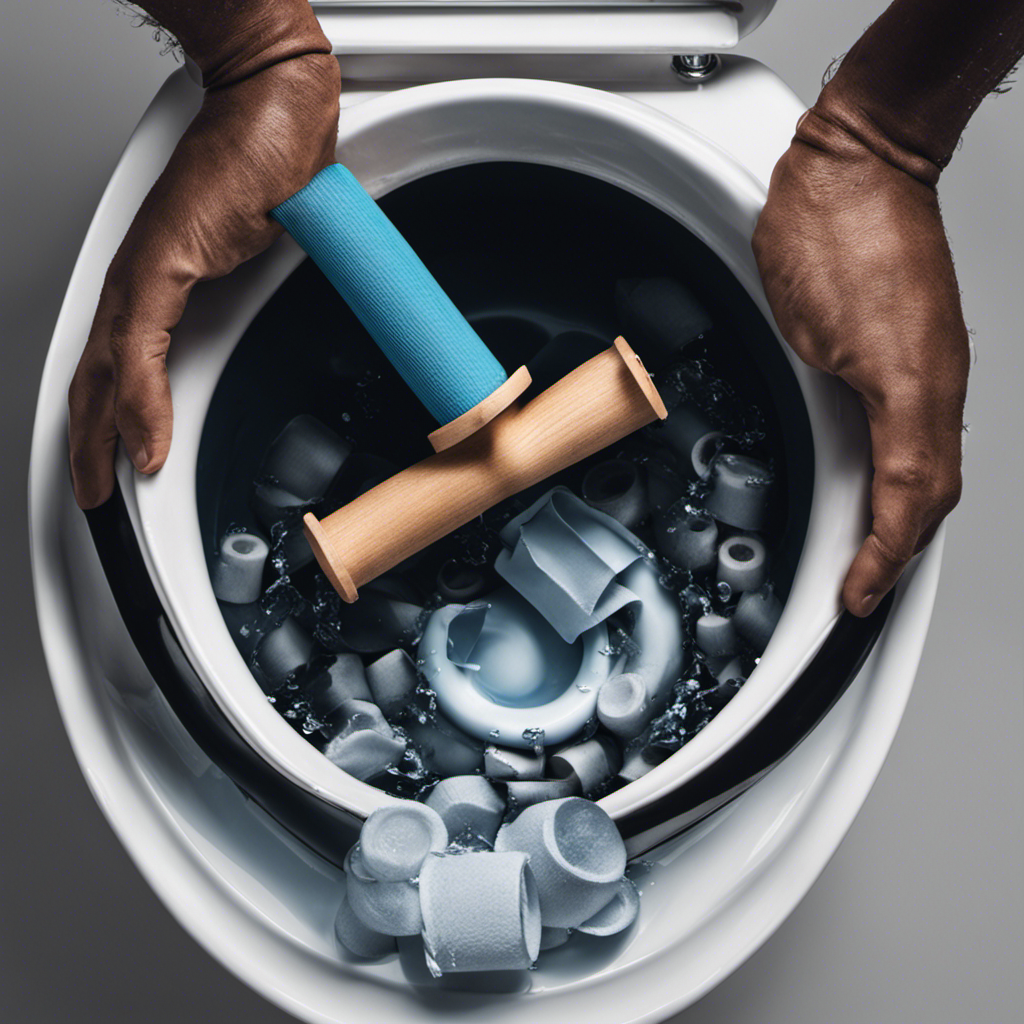I’m here to help you figure out why your toilet won’t flush.
Picture this: you’re in a sticky situation, standing over a toilet that just won’t cooperate. Well, fear not!
In this article, I’ll guide you through common causes of a clogged toilet and provide practical solutions to fix it.
We’ll delve into the importance of the flapper in toilet flushing, troubleshoot low water pressure issues, and even explore the impact of hard water.
Let’s get your toilet back in working order!
Key Takeaways
- Clogs in the pipes or excessive toilet paper and debris buildup can prevent a toilet from flushing properly.
- Plungers and plumbing snakes can be used to dislodge clogs in the toilet bowl and pipes.
- The flapper, chain, and water level in the tank play important roles in effective flushing.
- Low water pressure in a toilet can be caused by issues with the water supply, fill valve, float valve, or pressure regulator.
Common Causes of a Toilet Not Flushing
One of the most common reasons why a toilet won’t flush is if there is a clog in the pipes. When there is a clog, the water from the toilet tank cannot flow into the toilet bowl properly, resulting in a weak or non-existent flush.
Clogs can occur due to various reasons, such as excessive toilet paper, foreign objects, or a build-up of debris over time. To fix this issue, it is important to identify the location of the clog.
If it is in the toilet bowl, a plunger can be used to create pressure and dislodge the blockage. However, if the clog is in the pipes beyond the toilet bowl, a plumbing snake may be required to remove the obstruction.
Regular maintenance and avoiding flushing inappropriate items can help prevent clogs in the future.
How to Fix a Clogged Toilet
To fix a clogged toilet, you’ll need to try a few different methods.
One important aspect of toilet overflow prevention is knowing how to effectively use a toilet plunger. Start by positioning the plunger over the drain hole, ensuring a tight seal.
Next, use a firm and forceful motion to push and pull the plunger, creating suction and dislodging the clog. Repeat this process several times if necessary.
If the plunger doesn’t work, you can also try using a toilet auger. Insert the auger into the drain hole and crank the handle clockwise to break up the clog. Remember to always wear gloves and take precautions to avoid splashing.
With these toilet plunger techniques, you can tackle clogs and prevent toilet overflows effectively.
Understanding the Role of the Flapper in Toilet Flushing
Understanding the role of the flapper in toilet flushing is crucial for maintaining proper functioning. The flapper is a rubber or plastic valve that controls the flow of water from the tank into the bowl. When you flush the toilet, the flapper is lifted, allowing water to rush into the bowl and create the necessary force to remove waste.
The flapper is connected to the flush handle by a chain, which is responsible for lifting the flapper when the handle is pressed. If the chain is too loose or too tight, it can affect the flapper’s ability to seal properly or open fully, resulting in a weak flush or a toilet that won’t flush at all.
Additionally, the water level in the toilet tank plays a crucial role in flushing. If the water level is too low, there may not be enough force to effectively flush the waste. Conversely, if the water level is too high, it can cause the flapper to close prematurely, again resulting in a weak flush.
Therefore, maintaining the proper water level is vital for efficient flushing.
Troubleshooting Low Water Pressure in a Toilet
Troubleshooting low water pressure in a toilet can be a frustrating experience, but there are a few common causes and solutions.
The first step is to check the water supply to the toilet. Make sure the water valve is fully open and that there are no obstructions or leaks in the supply line.
If the water pressure is still low, the next step is to check the functionality of the fill valve. This valve controls the flow of water into the toilet tank. To do this, turn off the water supply to the toilet and remove the fill valve cap.
Check for any debris or mineral buildup that may be hindering the valve’s operation. If necessary, clean or replace the fill valve to restore proper water pressure.
Exploring the Impact of Hard Water on Toilet Flushing
If you have hard water, it can cause mineral buildup in your toilet, affecting the efficiency of your flush. Mineral deposits in toilets are a common issue that many homeowners face.
Hard water contains high amounts of minerals such as calcium and magnesium. When water evaporates, these minerals are left behind, creating a crusty residue on the surfaces they come into contact with. Over time, this buildup can accumulate inside the toilet bowl and the internal mechanisms of the toilet, leading to clogs and reduced water flow.
The effects of hard water on plumbing systems go beyond just the toilet. It can also cause mineral deposits to form in pipes, faucets, and showerheads, reducing water pressure and potentially causing damage.
Regular cleaning and the use of descaling agents can help prevent mineral buildup and maintain the efficiency of your toilet flush.
Conclusion
In conclusion, it is crucial to understand the common causes of a toilet not flushing and how to fix them in order to maintain a functional bathroom.
By addressing issues such as clogs, flapper malfunctions, low water pressure, and the impact of hard water, you can ensure a smoothly operating toilet.
So, next time you encounter a flushing problem, don’t panic! Instead, take a practical approach and apply the knowledge you’ve gained.
Remember, a properly flushing toilet is essential for a comfortable and hygienic living space. Can you imagine life without a functioning toilet?
